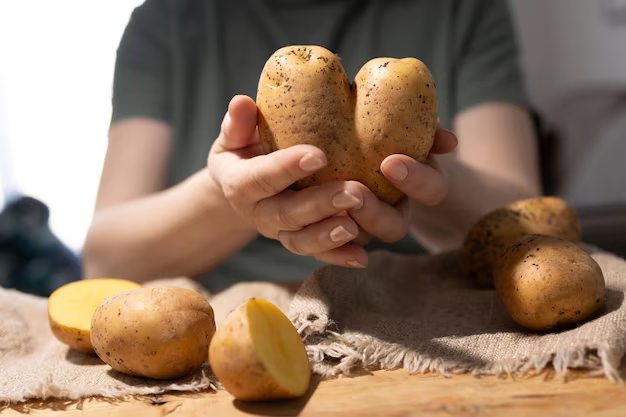Delicious Ways to Cook Potatoes Safely for Diabetics
Cooking potatoes might seem like a straightforward task, but for diabetics, the methods you choose can make a substantial difference in blood sugar control. Potatoes have a high glycemic index (GI), meaning they can cause a rapid increase in blood glucose levels. However, with thoughtful preparation and cooking techniques, potatoes can still fit into a balanced diabetic diet.
Choose the Right Variety
Start with selecting the right type of potato. Waxy potatoes like red or new potatoes typically have a lower GI compared to starchy varieties like Russets. The waxy varieties help maintain a steadier release of glucose.
Healthy Cooking Methods
1. Boiling
Boiling potatoes can be a healthier option for diabetics. By boiling them with their skins on, you can help retain fiber, which is known to reduce the GI impact. Once boiled, allow them to cool before consumption. Cooling increases the resistant starch content, which is beneficial for blood sugar management.
2. Steaming
Steaming is another excellent method that preserves nutrients. Like boiling, steaming requires minimal added fat and keeps the fiber intact. Serve them with olive oil, herbs, or a sprinkle of lemon for added flavor without extra calories.
3. Roasting with Olive Oil
Roasting in small chunks with a drizzle of olive oil lets you enjoy crispy potatoes with a lower-fat content. Olive oil isn't just a heart-health booster; it also slows down carbohydrate absorption. Adding a sprinkle of herbs like rosemary or thyme can enhance the aromas and flavors.
4. Mashing with Legumes
If you enjoy mashed potatoes, consider mashing them with legumes like chickpeas or lentils. This adds protein and fiber, reducing the dish's overall GI. Use Greek yogurt as a substitute for butter or cream to keep the mashed potatoes creamy, healthy, and diabetes-friendly.
5. Avoid Frying
Avoid deep-frying or using excess butter and cream, as these add unnecessary fats that can contribute to insulin resistance and weight gain. Opt for the healthier cooking methods described for a delicious yet mindful preparation.
Pair with the Right Foods
Pair potatoes with non-starchy vegetables or lean proteins. Green leafy vegetables, beans, grilled chicken, or fish can further balance your meal, helping to manage the glucose response more effectively. Incorporating a small serving of healthy fats like avocado or nuts is another way to moderate the meal’s glycemic impact.
Exploring Financial and Educational Resources
As you focus on maintaining a balanced diet, you might also consider how other supports can benefit your lifestyle. Access to financial assistance programs, educational grants, or credit solutions can significantly impact your journey, providing the sustainability needed to prioritize health.
For those seeking more knowledge or who might face financial hurdles, tapping into helpful resources can be transformative. Here's a helpful list:
- 🎓 Educational Grants: Unlock opportunities for nutrition education or cooking classes tailored for health management.
- 💰 Financial Assistance Programs: Explore government aid or non-profit organizations that support medical expenses or diabetic supplies.
- 🔑 Credit Solutions: Consider financial instruments offering lower interest rates or repayment flexibility to manage unexpected medical expenses.
- 📚 Community Workshops: Many communities offer free sessions on meal planning for specific dietary needs, including diabetes.
With the right approach and resources, managing diabetes through thoughtful meal preparation becomes empowering rather than daunting, allowing for a rich and satisfying culinary experience.
